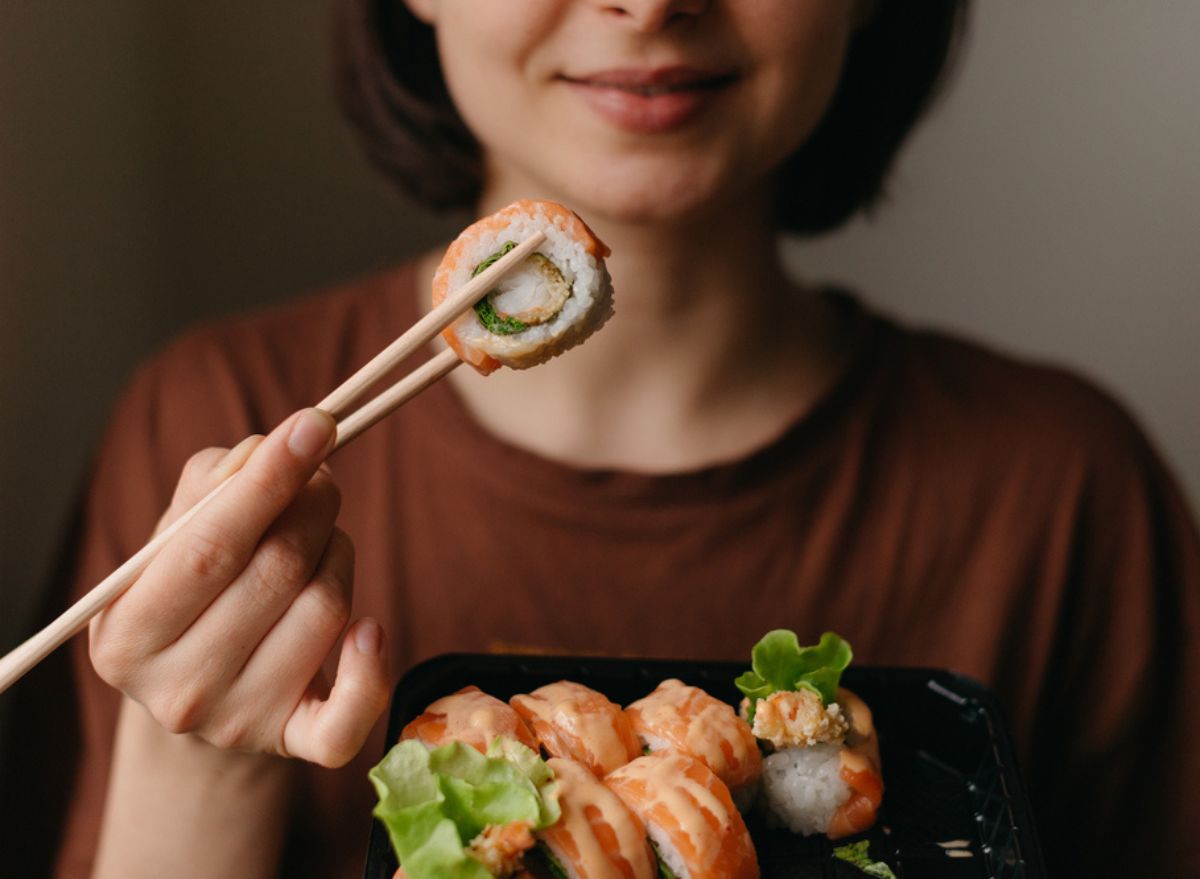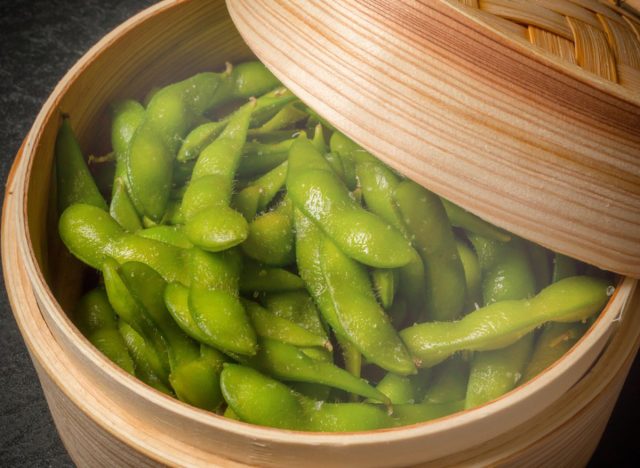The #1 Order to Never Make at a Sushi Restaurant, According to Chefs

When dining out, it pays to be discerning—with your time, your money, and the type of cuisine you're willing to spend on. This is a sentiment that applies to all manner of dining styles and cuisines, from drive-thru fast-food all the way up to Indian restaurants and Mexican spots.
A common denominator that separates the good from the average (or even bad), no matter the dining style or cuisine, is freshness. The quality of ingredients and dishes hinges on freshness, and while this is true of every type of restaurant, perhaps nowhere is this more pivotal than a sushi restaurant. After all, a dining style that emphasizes raw fish and seafood is one where freshness is of the utmost importance.
In addition to freshness, simplicity is also key when it comes to sushi quality. That's according to sushi experts and sushi-loving chefs, who unanimously agree that good sushi should be free of frills, meat, and any additions that serve to mask inadequate quality.
"I enjoy simplicity, as I think it is the hardest thing to achieve," explains Jeremy Shigekane, executive chef of 100 Sails Restaurant & Bar at Prince Waikiki. "The quality of ingredients at every step and the skill set is what make, to me, an exceptional dish."
He also points out that he specifically avoids any sushi dishes involving anything other than fish or vegetables, and that presentation is equally key. "The story or sum of a dish, which is important to the modern diner, is told not by a person verbally but by how the dish is put together. Skill set says devotion to the craft and can be told by just a single piece of sushi."
Josh Mouzakes, executive chef at ARLO at Town and Country Resort in San Diego, agrees that simplicity wins the day, while advising that any "masking" ingredients should be avoided. "Never order any spicy appetizers," he says. "Japanese food is all about simplicity and purity, so if you burn out your taste buds on the first course, you'll miss all the subtleties and beauties of the rest of the meal."
He also suggests skipping anything with imitation krab ("because yuck!"), but recommends simple starters like miso soup as good litmus tests for the rest of the meal. "One, it comes out fast and you can start eating immediately," says Mouzakes. "Two, these simple items tell you a lot about the skill of the chefs."

Leslie Daniel is another chef who shuns added spices and sauces when it comes to sushi. According to the executive chef of Kuro at the Hard Rock Hotel & Casino in Atlantic City, "a good sushi restaurant chef will spend a great amount of time preparing the fish, and some of these fish have very unique and delicate flavors that can be hidden by overcompensating with things like intense spices and other sauce-based items."
Instead, Daniel recommends opting for an omakase-tasting menu experience. "Great for sushi lovers and for guests looking to try something 'out of the norm,' this authentic experience allows you to put your trust in the chef as he or she creates a special meal catered to your liking. The next time you find yourself in a Japanese restaurant and there is an option for the chefs omakase give it a try and enjoy an authentic experience that you can't get at any other regular restaurant."
Another advocate of freshness and simplicity is Eric Mickle, executive chef of Salt & Fin at Harrah's Resort Southern California. Aside from spicy sauces, another red flag to look for is slowness. "Never order anything from a slow sushi restaurant," he says. "Sushi should always be fresh, and when a restaurant is known for being slow, there's a chance that the fish might be sitting around and every day that goes by, the quality is going down, too."
This same theory applies to pricing—and in this case, cheap does not equal better. "Fish isn't cheap, so if a restaurant is consistently slow, there's a chance that the business-first mentality might come into play and they might hold on to items longer than they should."
Troy Guard looks for the same indicators. Owner and executive chef of Denver's TAG Restaurant Group, he says the first thing he does at sushi restaurants is look at the display case to see what looks the freshest. "I like to sit at the sushi counter so I have the chance to chat with the chefs and ask what they recommend," says Guard. "They almost always point you in the right direction for what is in season and the best catch of the day." The chef also adds that he typically avoids fried or hot sushi dishes. "If it's fresh and quality, you want to be able to enjoy flavors the chefs are highlighting in the fish itself."

Of course, sometimes there can be such a thing as too simple, like steamed edamame. "The number one thing people should not order at sushi spots is steamed edamame, not only because it's boring, but also it adds nothing to the experience, especially if you are in a high-end spot." So says Adonay Tafur, executive chef of Osaka Nikkei Miami. "The people in this industry pride themselves on their product and the effort they put in their jobs, so I would definitely try ordering items that represent the establishment or at least have their twist involved in them," adds Tafur. "Going out to eat is already an investment of time and money. Why waste it with average or mediocre experiences and why not try to get the best for your buck!"
The same overly simplistic strategy applies to other menu items at sushi restaurants, like mediocre maki. According to Mike Morales, chef-partner of Chicago's Sunda New Asian, "I personally try not to order rolls at sushi restaurants, unless I'm with a bigger group. Sushi rolls tend to fill me up quickly. Instead, I enjoy ordering a variety of items from the menu."
Morales also notes that, when selecting a sushi restaurant, he looks to see which ones are busy (like Sunda: "we're very fortunate that our fish-based menu items are very popular, so we receive fresh fish daily"), which indicates they are not sitting on product. "The fish that tend to move a lot in sushi restaurants are usually tuna, hamachi, and salmon. Those are the big three in the majority of sushi restaurants, and these cuts move faster and will always stay fresher."








